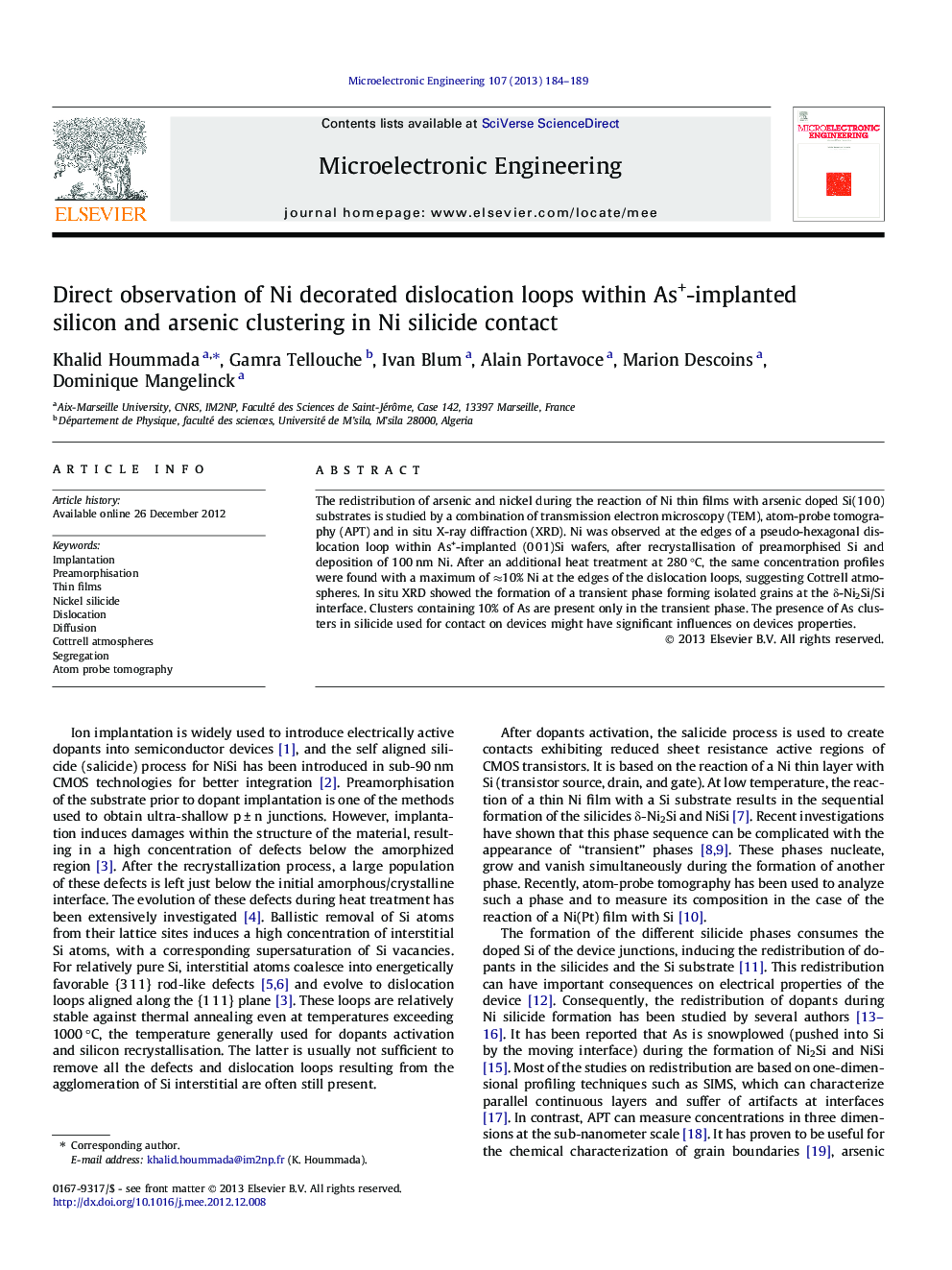| Article ID | Journal | Published Year | Pages | File Type |
|---|---|---|---|---|
| 539264 | Microelectronic Engineering | 2013 | 6 Pages |
The redistribution of arsenic and nickel during the reaction of Ni thin films with arsenic doped Si(1 0 0) substrates is studied by a combination of transmission electron microscopy (TEM), atom-probe tomography (APT) and in situ X-ray diffraction (XRD). Ni was observed at the edges of a pseudo-hexagonal dislocation loop within As+-implanted (0 0 1)Si wafers, after recrystallisation of preamorphised Si and deposition of 100 nm Ni. After an additional heat treatment at 280 °C, the same concentration profiles were found with a maximum of ≈10% Ni at the edges of the dislocation loops, suggesting Cottrell atmospheres. In situ XRD showed the formation of a transient phase forming isolated grains at the δ-Ni2Si/Si interface. Clusters containing 10% of As are present only in the transient phase. The presence of As clusters in silicide used for contact on devices might have significant influences on devices properties.
Graphical abstractFigure optionsDownload full-size imageDownload as PowerPoint slideHighlights► Ni on dislocation loop has been observed in three dimensions by APT. ► Cottrell atmospheres of Ni on dislocation loops is observed in silicon. ► Arsenic is not incorporated in δ-Ni2Si but accumulates at the δ-Ni2Si/Si interface. ► Clusters containing 10% of As are present only in the transient phase.
